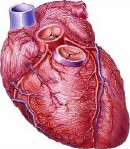
WEDNESDAY, May 4 (HealthDay News) — A gene essential to cardiac development has been associated with a group of congenital heart defects that cause a major proportion of childhood death from heart abnormalities.
It is unclear how these cardiac defects — all malformations of the left ventricular outflow tract (LVOT) — develop. The new research suggests a genetic component may play a role.
“It is estimated that there are more than 500 genes that may be important in heart development,” said lead investigator Dr. Kim McBride, from the Center for Molecular and Human Genetics at The Research Institute at Nationwide Children’s Hospital and a faculty member at The Ohio State University College of Medicine. “Changes in any of these genes may impact how a child’s heart forms.”
Researchers at the Nationwide Children’s Hospital set out to identify specific genes involved in cardiac development by examining the DNA of children treated for left ventricular outflow tract malformations and their parents. The study revealed a new link between the gene ERBB4 and specific LVOT defects.
Researchers said ERBB4 encodes a protein that serves as an “on” or “off” switch in many cellular functions during heart development.
“The precise defect in this very large gene is not yet known,” said McBride. “ERBB4 now joins a previously identified gene, NOTCH1, as a susceptibility gene for LVOT defects. Replication of these results in other subjects will be required to better determine its role in the development of the heart malformations.”
The LVOT defects include a narrowing of the aorta, a large blood vessel that branches off the heart, which causes it to pump abnormally hard (coarctation of the aorta) and a narrowing of the heart’s aortic valve that obstructs normal blood flow (aortic valve stenosis).
They also include a rare heart defect in which the left side of the heart is severely underdeveloped (hypoplastic left heart syndrome), a set of four heart defects that cause inflow and outflow problems (Shone complex) and a very rare heart defect in which the aorta is not fully developed (interrupted aortic arch type).
The study appears in the journal Birth Defects Research Part A.
More information
The U.S. National Heart, Lung, and Blood Institute lists detailed information on congenital heart defects .

